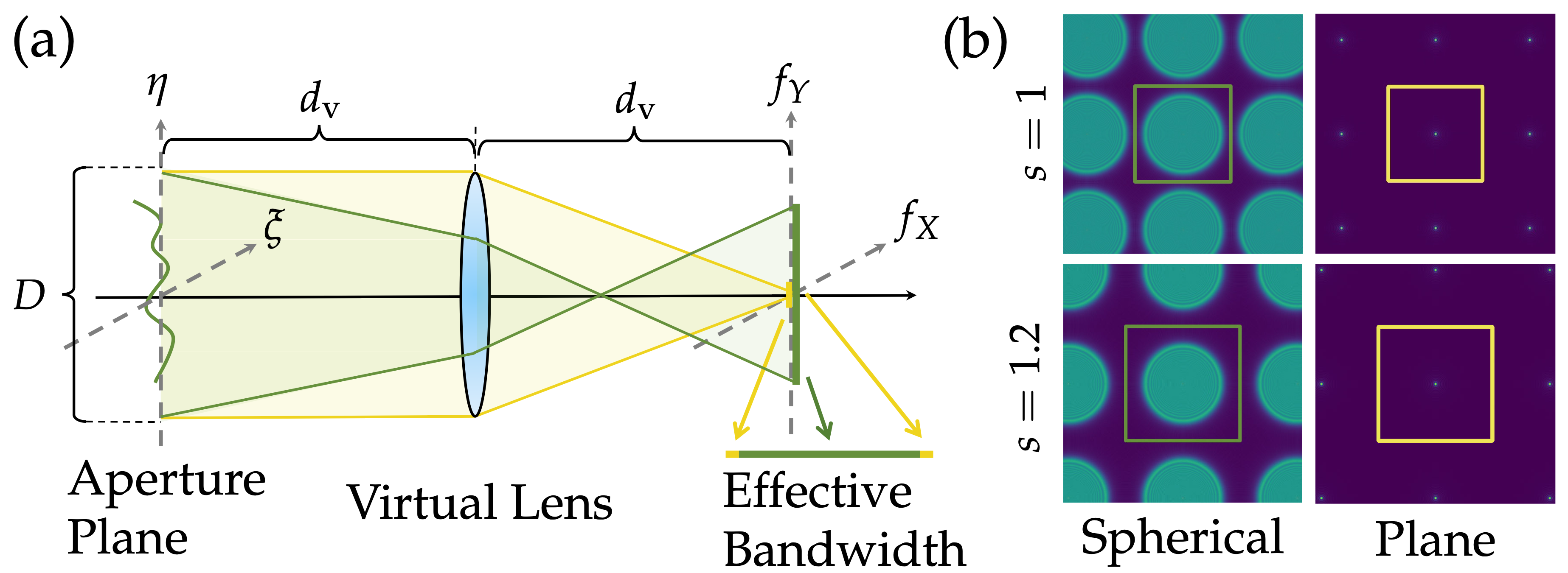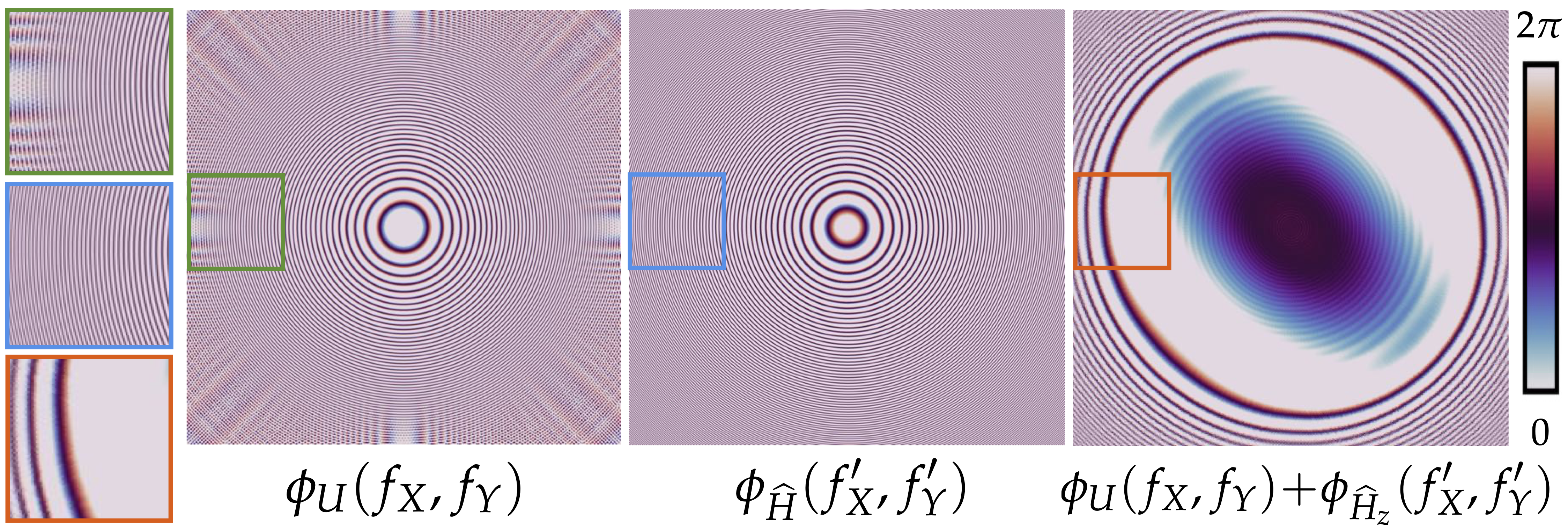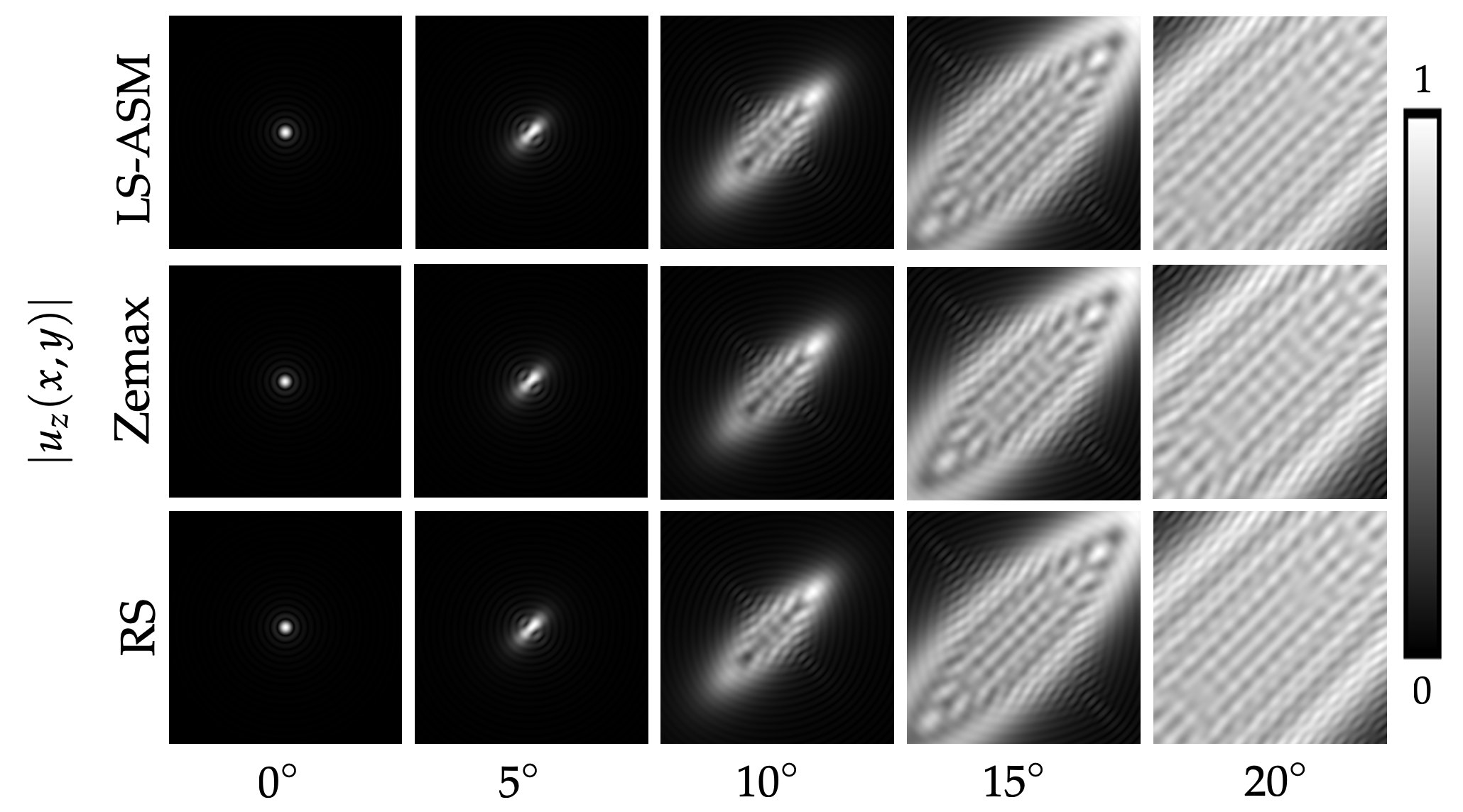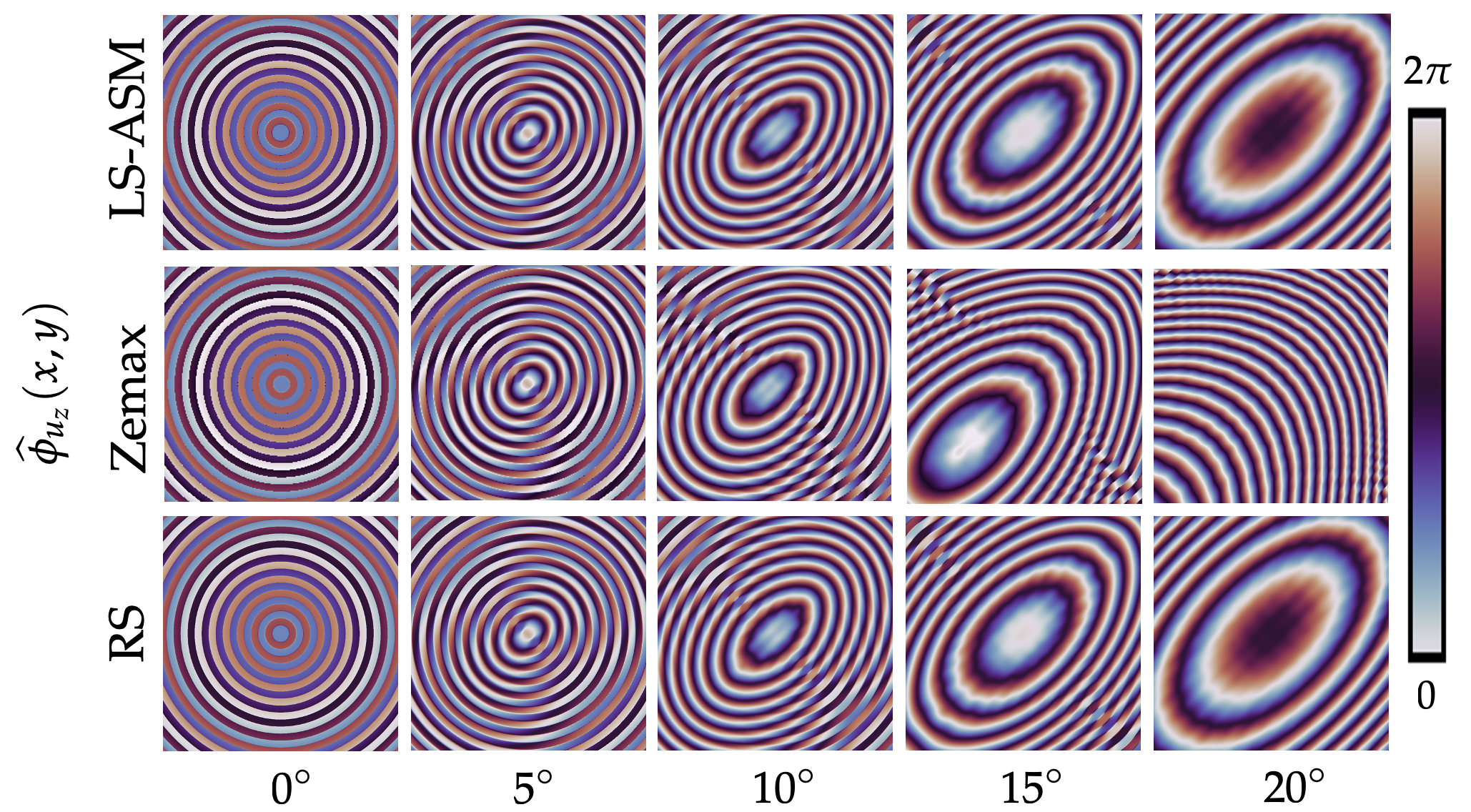
Accurately yet efficiently simulating off-axis diffraction is vital to design large-scale computational optics, but existing rigid sampling and modeling schemes fail to address this. Herein, we establish a universal least-sampling angular spectrum method that enables efficient off-axis diffraction modeling with high accuracy. Specifically, by employing the Fourier transform’s shifting property to convert off-axis diffraction to quasi-on-axis, and by linking the angular spectrum to the transfer function, essential sampling requirements can be thoroughly optimized and adaptively determined across computation. Leveraging a flexible matrix-based Fourier transform, we demonstrate the off-axis point spread function of exemplary coded-aperture imaging systems. For the first time, to our knowledge, a significant speed boost of around 36× over the state of the art at 20° is demonstrated, and so is the viability of computing ultra-large angles such as 35° within seconds on a commercial computer. The applicability to high-frequency modulation is further investigated.

We adopt the angular spectrum method (ASM) as it is a rigorous formulation of off-axis diffraction. An input field with an angular spectrum U has a diffraction field at distance z calculated by:

whereis the propagation function.
We propose the Least-Sampling ASM (LS-ASM) that minimizes the sampling requirements in both spatial and frequency domains and unifies the critical sampling rates for all types of input fields.



We summarize the complete minimum sampling rates in both domains as:


The results are compared against a baseline method (Shift-BEASM) and the ground truth (Rayleigh-Sommerfeld Integral). Two cases of comparisons are considered:
In Case 1, where the samples in Shift-BEASM are set to achieve the same level of SNR as LS-ASM, LS-ASM consistently performs at a remarkably short runtime even at large angles (e.g., 20 degrees), outperforming the Shift-BEASM by over 35x.
In Case 2, where the samples in Shift-BEASM are set as the same rate as LS-ASM, the baseline yields incorrect results while ours consistantly performs well along all angles.
We further extend our discussions to complex and high-frequency input fields in the supplementary, and verify our theory using an example of diffuser modulation. More results, derivations, and proof are in supplementary.




@article{Wei:23,
title = {Modeling Off-Axis Diffraction with the Least-Sampling Angular Spectrum Method},
author = {Wei, Haoyu and Liu, Xin and Hao, Xiang and Lam, Edmund Y. and Peng, Yifan},
journal = {Optica},
volume = {10}, number = {7}, pages = {959--962},
month = jul,
year = {2023},
publisher = {Optica Publishing Group},
doi = {10.1364/OPTICA.490223}
}